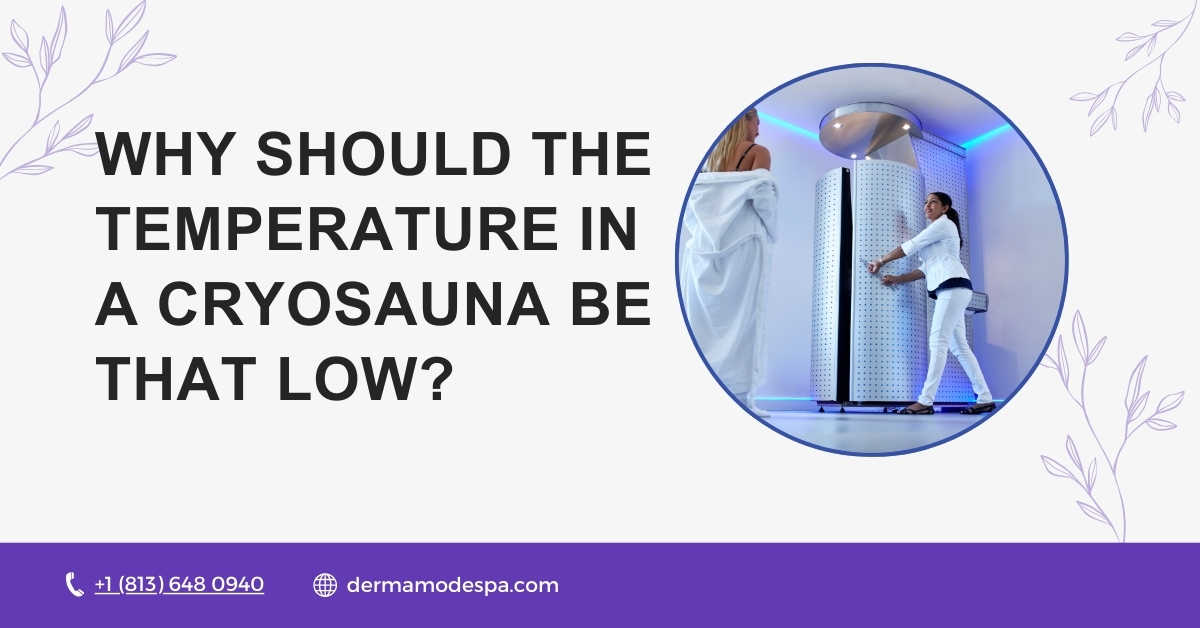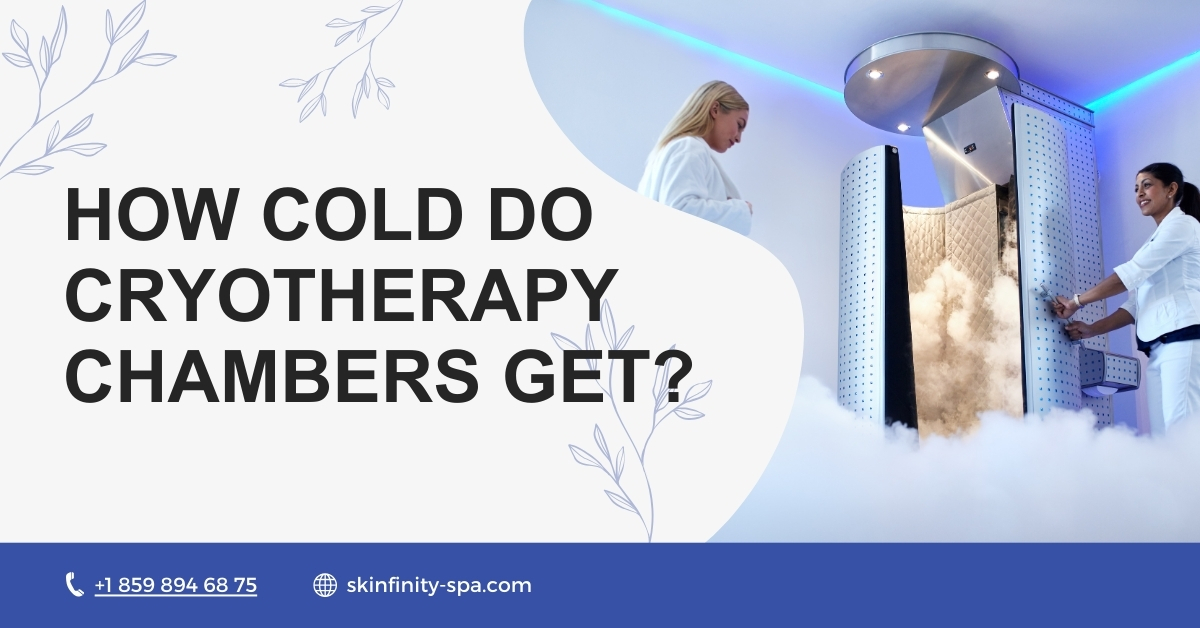Cryotherapy has surged in popularity as a recovery treatment, especially among athletes and individuals seeking relief from pain and inflammation. This innovative therapy involves exposing the body to extreme cold, typically in a cryotherapy chamber or cryosauna, to trigger various physiological responses. As the popularity of whole-body cryotherapy grows, many wonder just how cold these chambers actually get during a cryotherapy session. Understanding the temperature ranges and types of chambers can help individuals make informed decisions about their cryotherapy treatment options.
Types of Cryotherapy Chambers?
There are primarily two types of cryotherapy chambers: whole-body cryotherapy chambers and localized cryotherapy units. Whole-body cryotherapy chambers expose the entire body to freezing cold air, typically achieved by using liquid nitrogen to cool the chamber to temperatures as low as -110 to -140 degrees Celsius. This extreme exposure can last for a few minutes, promoting increased blood flow and helping to reduce inflammation and pain throughout the body. The choice impacts cryotherapy cost, as advanced features may increase expenses. Always consider personal needs and budget.
On the other hand, localized cryotherapy targets specific areas, using cold packs or localized cryo chambers to treat injuries or swelling. Both types of cryotherapy can provide significant benefits, including decreasing recovery time after exercise and minimizing symptoms of certain medical conditions. Understanding the differences between these types of chambers can help individuals select the most suitable option for their needs.
What Chamber Is The Coldest?
When it comes to the coldest cryotherapy chambers, whole-body cryotherapy units that utilize liquid nitrogen tend to reach the lowest temperatures. These cryo chambers can achieve temperatures around -140 degrees Celsius, creating a freezing cold environment that induces a rapid cooling effect on the skin and underlying tissues. This extreme cold exposure can trigger the body’s natural healing processes, promoting increased circulation, decreasing inflammation, swelling and tightening loose skin.
Many pro athletes and fitness enthusiasts turn to these cryotherapy sessions to enhance recovery from injuries or intense workouts. However, it is essential to note that while the cold air feels invigorating, prolonged exposure to such low temperatures should be conducted under professional supervision to avoid tissue damage. Understanding the capabilities and effects of these cryotherapy chambers can help individuals maximize the benefits of this innovative therapy.
Has Cryotherapy Always used Super-freezing Temperatures?

Cryotherapy, as a therapeutic treatment, has evolved significantly over the years. Initially, the concept of cold exposure for healing can be traced back to ancient civilizations, where people used ice, snow, and cold water to treat injuries and inflammation. However, the modern practice of cryotherapy has predominantly centered around the use of advanced cryotherapy chambers, which utilize liquid nitrogen to create super-freezing temperatures.
Today’s whole-body cryotherapy sessions can expose the body to extreme cold, reaching temperatures as low as -140 degrees Celsius. This stark contrast in temperatures compared to traditional methods highlights the technological advancements in cryotherapy treatment. The effectiveness of these super-cooled environments lies in their ability to rapidly decrease skin temperature and trigger physiological responses such as increased blood flow and reduced inflammation.
While some early cold treatments were beneficial, the precision and intensity of modern cryotherapy provide a more controlled and effective approach to recovery and pain relief. The use of cryo chambers has thus transformed the landscape of cold exposure therapy, offering athletes and recreational users alike a robust solution for enhancing recovery and managing pain stemming from injuries or intense exercise.
Is A Temperature of -230°F Safe for Cryotherapy?
The safety of cryotherapy has been a topic of considerable discussion, particularly when it comes to extreme temperatures such as -230°F, which translates to approximately -145°C. In the realm of cryotherapy, exposure to such low temperatures can enhance the benefits of the treatment, including rapid recovery from sports injuries and a significant reduction in inflammation.
However, it is crucial to understand that safety measures are paramount when engaging in cryotherapy sessions at these extreme temperatures. Professional supervision is essential to monitor the effects of cryotherapy on the body, ensuring that the skin and underlying tissues do not suffer from frostbite or other forms of damage. While whole-body cryotherapy chambers achieve temperatures close to this extreme, the duration of exposure is typically limited to a few minutes to mitigate risks.
Furthermore, individuals with certain medical conditions, such as cardiovascular issues or severe skin sensitivities, should consult healthcare professionals before undergoing cryotherapy. The controlled environment of cryotherapy chambers allows for protective measures to be in place, ensuring that the benefits of cold exposure outweigh potential risks, making it a viable treatment option for many seeking relief from pain and inflammation.
Why should the Temperature in a Cryosauna be that Low?

The temperature in a cryosauna is intentionally set to extremely low levels, typically between -110 to -140 degrees Celsius, to maximize the benefits of cryotherapy. This freezing cold environment triggers various physiological responses in the body that are essential for effective recovery and pain management. When the skin is exposed to such low temperatures, the blood vessels constrict, reducing blood flow to the area and minimizing inflammation and swelling.
This process helps in alleviating pain associated with injuries or chronic medical conditions. Once the cryotherapy session concludes, the body begins to warm up, leading to a rebound effect where blood vessels dilate, promoting increased blood flow and delivering oxygen and nutrients to tissues that may have been damaged. This enhanced circulation not only aids in muscle recovery but also supports the healing of injured areas, making whole-body cryotherapy a popular choice among pro athletes and fitness enthusiasts seeking to improve their recovery times after intense exercise.
Furthermore, exposure to such extreme cold is believed to stimulate the release of endorphins, resulting in an elevated mood and reduced perception of pain. This multifaceted approach to treatment showcases the importance of maintaining low temperatures in cryosaunas for optimal therapeutic effects.
Which is better – an electric cryogenic chamber or a liquid nitrogen-fed cryosauna?
When comparing electric cryogenic chambers to liquid nitrogen-fed cryosaunas, both have distinct advantages and potential drawbacks depending on individual needs and preferences. Electric cryogenic chambers utilize electric refrigeration systems to achieve cold temperatures, which can range from -110 to -140 degrees Celsius. These systems are often considered safer as they eliminate the risk associated with handling liquid nitrogen, making them more user-friendly for both operators and clients.
An electric chamber offers a more consistent cryo freeze experience, ensuring uniform temperature control. In contrast, a liquid nitrogen-fed cryosauna provides a more intense cryo freeze, often preferred for therapy requiring deeper cold penetration.
Ultimately, the choice between these two types of cryotherapy chambers will depend on personal comfort, the desired temperature effect, and the specific therapeutic outcomes sought. Individuals should consult with professionals to determine the best option for their needs, ensuring they receive the maximum benefits from their cryotherapy treatment.

